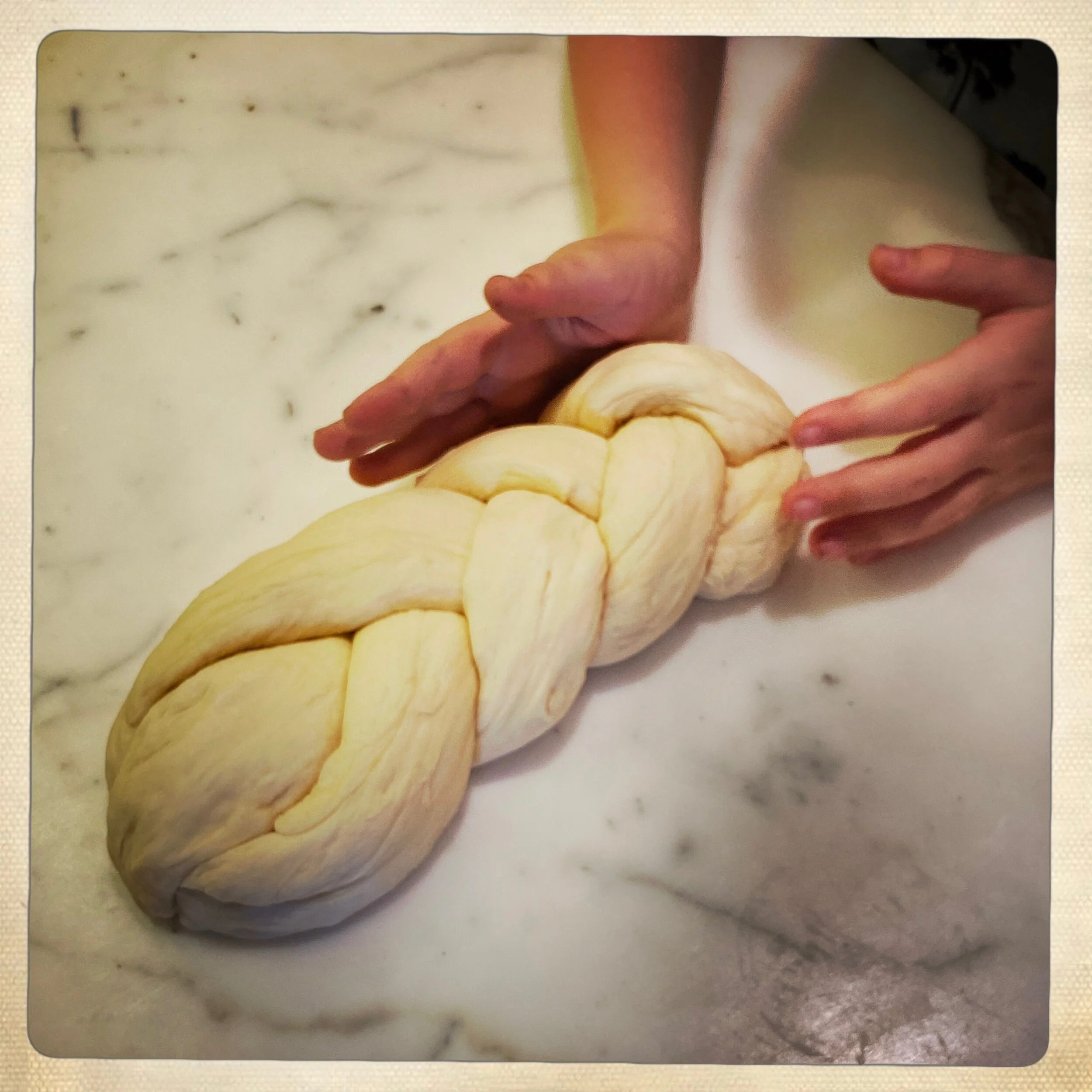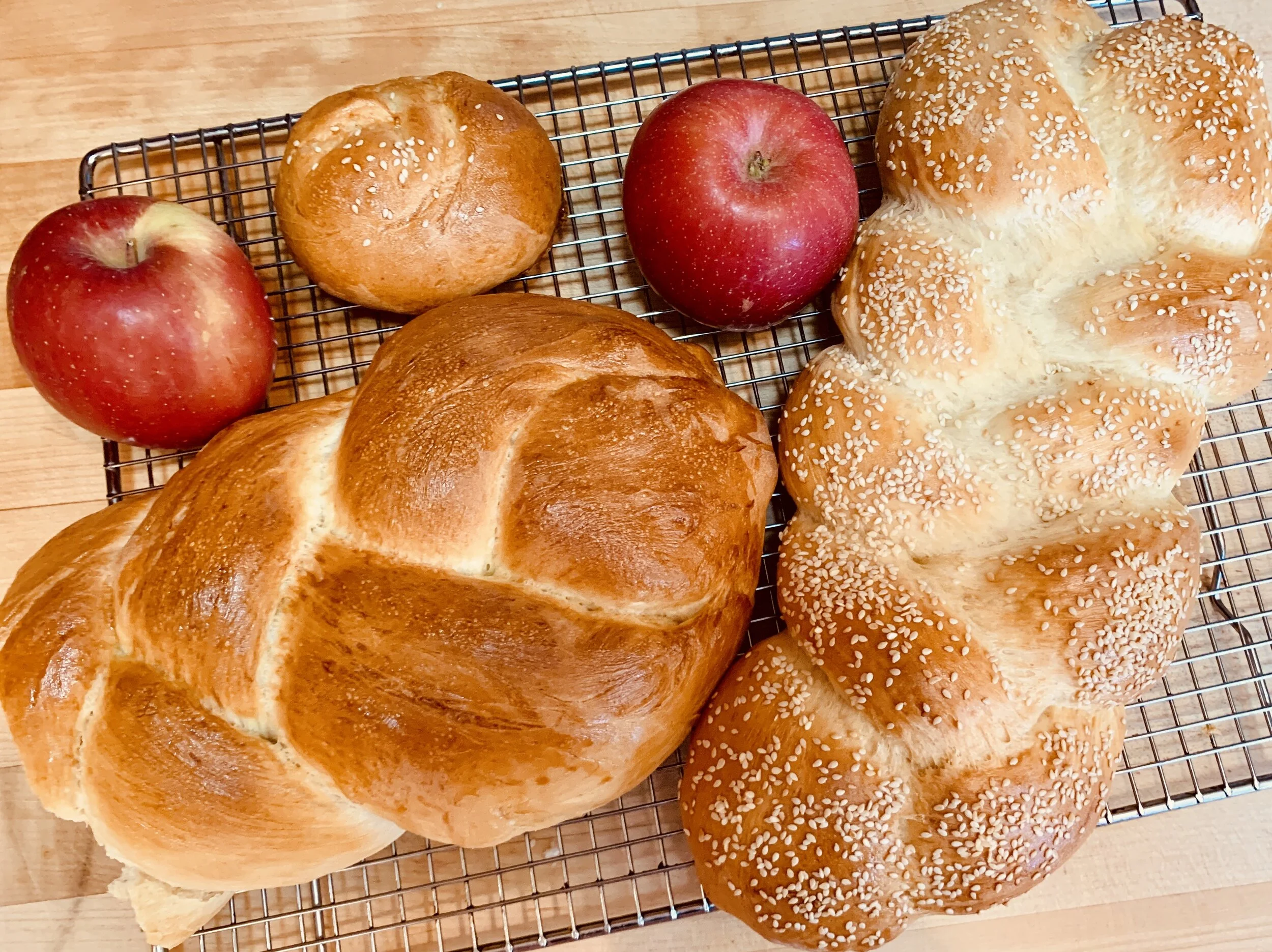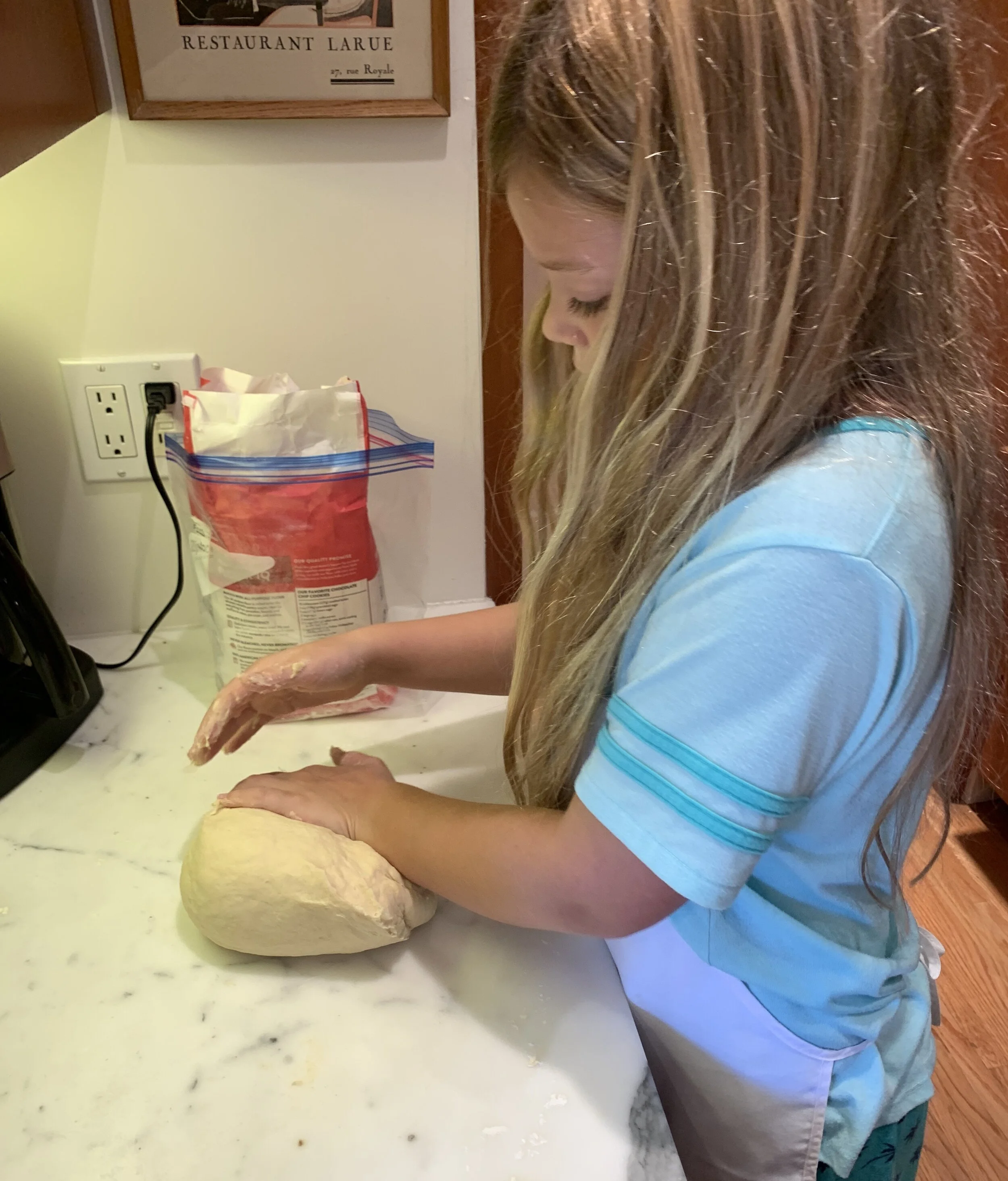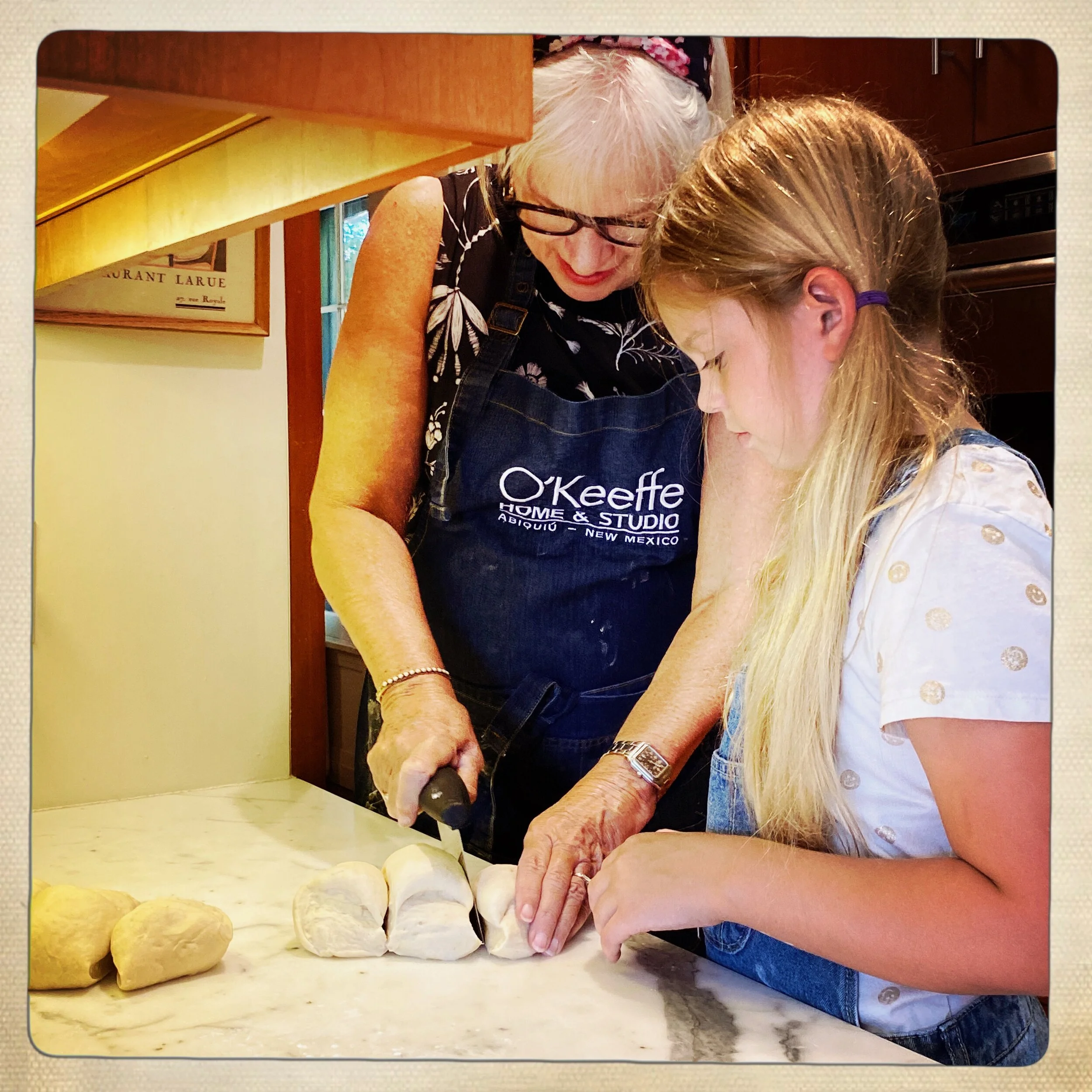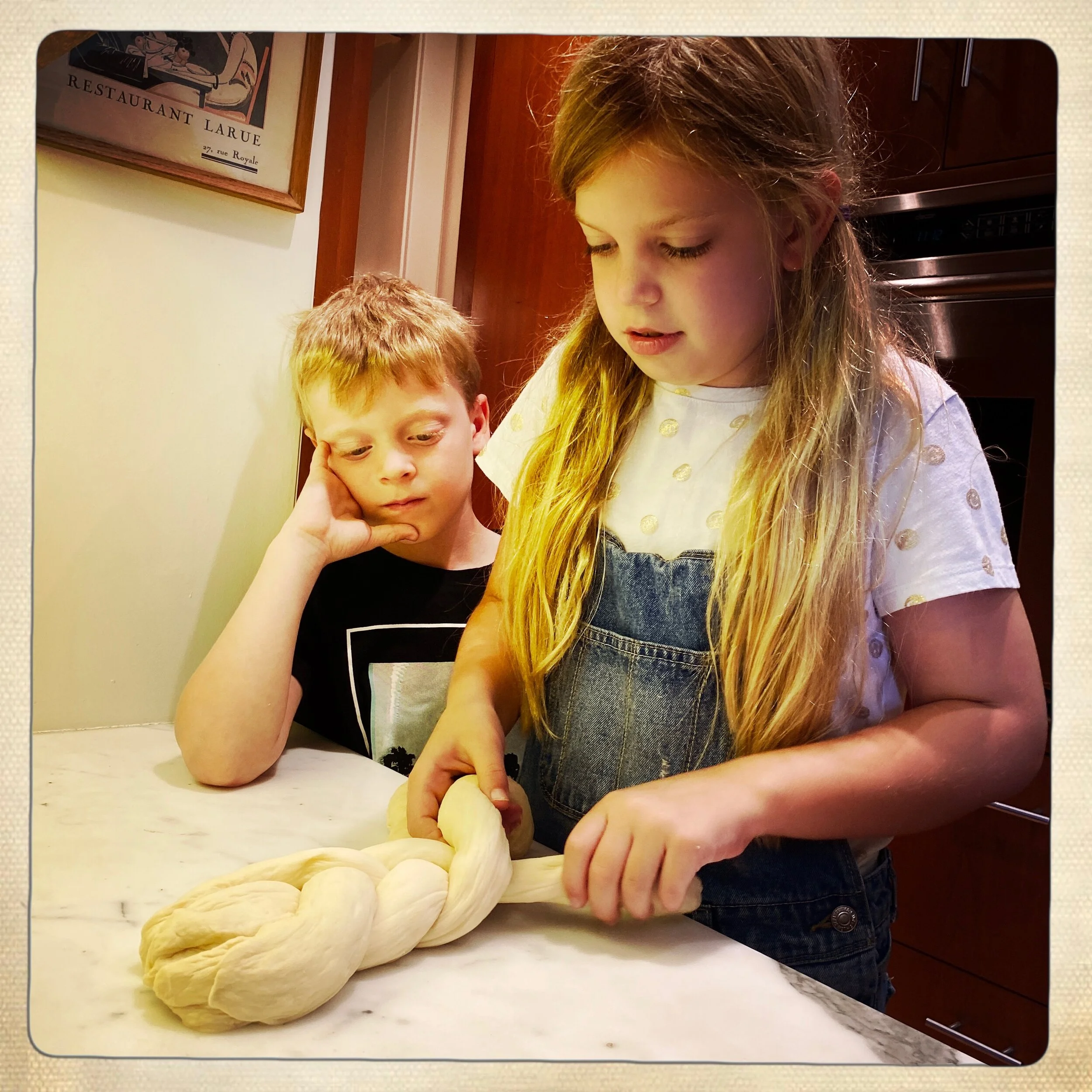Braiding the Challah
Good news from Austin! The two grandkids are back in school—masked and socially-distanced but very happy to have their lives back. Unlike some finicky adults, these first-and fourth graders don’t give a whit about wearing masks all day. If that’s what it takes, to be with friends again and get a break from parental oversight, it’s worth it! In early September their calendar is jam-packed with after-school activities, sleepovers, and birthday parties—just like the old days. Suddenly, baking with grandma is so old school.
I concocted a plan to re-introduce baking together with an in-person session. After seducing the parents with a three-day all-inclusive babysitting package including enriching museum visits, a glorious day at the beach, and organic made-from-scratch meals, they broke down and booked tickets to Los Angeles for Labor Day. Our exchange was simple. They got a romantic getaway in Laguna; I got three days in paradise with my favorite people, Piper and Finn. I swore that compulsive handwashing plus daily bathing and shampooing would not be a bother. Honestly, I would do almost anything to touch my grandkids first thing in the morning and tuck them in at night for three days. It has been a very long five months.
The results.
Selecting the right baking project was easy. With Rosh Hashanah starting Monday night, a homemade challah was a natural. Since I had managed to avoid bread baking during my 30-years of child rearing and working full time, we were all newbies. Though I was a bit anxious and had no time for recipe-testing, Piper’s proficiency with dough handling, gave me the confidence I needed to make the traditional egg bread. I chose a basic recipe, minus all the wacky add-ins like apple sauce, turmeric, chocolate chips and even garlic. Who ever heard of garlicky challah when comfort is the top priority?
When I told Piper over the phone that we would be making challah, I was pleased that she knew what I was talking about since her mixed family doesn’t observe the traditions. “There’s a Jewish girl at my school who makes challah every week with her mom,” Piper said. “It’s delicious!” She was up for making challah, but she assured me that she would not be having a Bat Mitzvah. “We are normal people,” she smartly explained.
Even as a total Jew, my memories of the High Holidays are mixed. As a girl in the Bronx, the whole world would stop. It was like a national holiday. Everyone put on their best new clothes and whether your family had the money for seats in synagogue or not, you promenaded on the Grand Concourse to show the world that you were ready for whatever the year might bring. Twenty years later, as a newcomer to Los Angeles, with a little boy to raise and without any family nearby, we joined a reform Temple. We hoped to connect with strangers in order to educate our son in being a Jew. But he, like his parents, never felt comfortable with all the rituals and high theatrics. Not to mention the signals of status that telegraphed to us that we surely did not belong. After his Bar Mitzvah, we stopped going.
Then, in our forties a miracle happened. On the Jewish holidays we started gathering with our neighborhood friends and celebrating in an easy way, in the comfort of our homes surrounded by the warmth of those we knew well and loved. Not everyone could recite the Hebrew prayers, and some people did not get dressed up, but our kids and the holiday rituals held us together year after year. Now, though the children are mostly gone, we continue to gather on the holidays, to raise a glass or two.
The baking team.
When I became a grandparent, I found myself thinking more about my own childhood, and what I absorbed from my grandparents. To me, a little girl in 1950s Bronx, they seemed to be from another planet. They wore funny clothes, listened to Yiddish radio all day, and ate weird foods. Remember stuffed derma? Now I realize they were clinging to beloved traditions to preserve their dissolving European pasts.
As a contemporary grandmother/feminist, I’m surprised at how often I weave in bits about my birth family’s Jewishness in the stories that I tell the children. I like to sneak in a Yiddish expression, throw them an exaggerated facial expression, offer a handmade butter cookie—subtle signs of being Jewish and being loved. Making a challah together was giving Piper a taste of my burnished past.
Watching her confidently twist the strands to make that sunny loaf, reminded me once again of how much she has grown. When we started baking, about a year ago, the girl had no technique. Just a lot of enthusiasm and attention to detail. Now she has not an ounce of anxiety where making a dough is concerned. And when it comes to kneading and punching down the dough, she has far exceeded her grandma. She has the touch. And way more strength in her wrists.
My hope with all this baking is to weave together strands of my own past so that Piper and Finn will know more about where they come from later. When life gets more complicated.
Thanks to Iris Schneider for the photos.
ABOUT THE RECIPE
This simple, foolproof recipe comes from the Café Beaujolais cookbook by Margaret Fox. Not quite as bright yellow as the store-bought kind, it’s perfect for toasting.
2 TBS dry yeast
1 ½ cups warm water
2 TBS sugar
2 tsp salt
2 ½ TBS vegetable oil
2 beaten eggs, plus 1 for brushing
about 5 cups all-purpose flour
sesame or poppy seeds for sprinkling
In a small bowl, mix together yeast, ½ cup warm water and sugar. Set aside in a warm place for 5 minutes until bubbly.
In the bowl of a mixer, whisk together 1 cup warm water, salt, oil, 2 eggs, yeast mixture, and 2 ½ cups flour. Using the beater, mix at medium-low speed until smooth and elastic, about 5 minutes. Switch to the dough hook. With the machine running at medium speed, gradually add the remaining flour. When it feels smooth but sticky, transfer the dough to a lightly floured board.
Knead by hand until smooth and elastic, and no longer so sticky. Dust with a bit more flour if necessary. Pat into a ball and place in a generously buttered large mixing bowl. Turn the dough over to coat on all sides. Cover with plastic wrap, top with a towel and place in a warm place about 1 hour, until doubled in size.
After risen, remove the dough from bowl and punch down. Knead for a minute just to remove air bubbles.
To make the braids, working on a lightly floured board, cut the dough into 6 equal parts. Place 3 back in the bowl and set aside. Using the palms of your hands, roll each dough ball into a baguette shape by going back and forth on the counter, until the dough stick is about 15-inches long. These are the braids.
Place 3 ends close together and pinch to secure the ends. Then make a 3-plaited braid. Pinch together the ends and tuck under a bit to secure. Repeat with the remaining 3 pieces to make 2 challahs. Place the breads on greased sheet pans, cover with a towel and let rest about 45 minutes at room temperature.
To bake, preheat oven to 375F.
Use the remaining beaten egg to brush the tops and side of the breads, brushing from the bottom up, being careful not to drip onto the pan. Sprinkle with seeds, if using. Bake about 30-35 minutes, until breads sound hollow when flicked with an index finger.
Cool on racks if you can wait. They freeze well.

